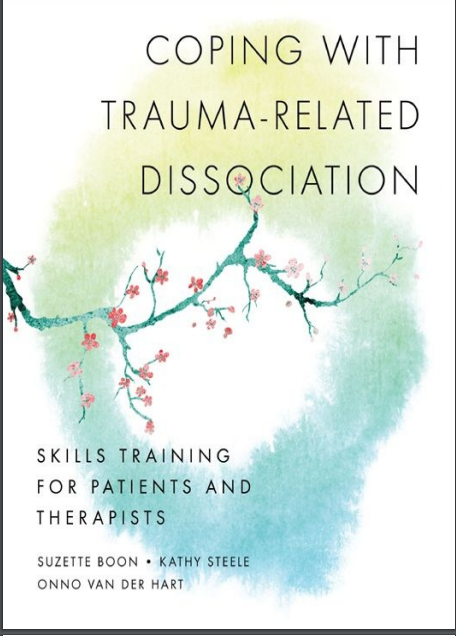

Coping with Trauma-Related Dissociation by Suzette Boon, Kathy Steele, and Onno van der Hart - Complete Book Summary
\"Coping with Trauma-Related Dissociation\" by renowned trauma specialists Suzette Boon, Kathy Steele, and Onno van der Hart stands as the definitive clinical guide for understanding, managing, and healing from trauma-related dissociative disorders, providing both survivors and mental health professionals with evidence-based strategies grounded in decades of specialized research and clinical practice in treating complex trauma and dissociative conditions. This comprehensive resource expertly explains how dissociation functions as a protective psychological mechanism that allows individuals to survive overwhelming traumatic experiences by creating internal separations between different aspects of consciousness, memory, identity, and bodily awareness, helping readers understand that dissociative symptoms represent adaptive survival responses rather than signs of mental illness or personal weakness. The authors, all internationally recognized experts in trauma and dissociation treatment, present their groundbreaking phase-oriented treatment approach that emphasizes safety and stabilization as foundational elements before moving into trauma processing and integration work, ensuring that survivors develop adequate coping skills and internal resources to handle the intense emotional and psychological material that emerges during recovery. Throughout the book, the clinical team provides detailed explanations of various dissociative phenomena including depersonalization, derealization, emotional numbing, memory gaps, identity confusion, internal conflicts between different self-states, somatic dissociation, and the complex internal systems that often develop in response to chronic childhood trauma and neglect. The comprehensive treatment framework addresses the critical importance of developing grounding techniques, emotional regulation skills, mindfulness practices, body awareness exercises, and healthy coping mechanisms that help survivors manage dissociative episodes while gradually building tolerance for previously overwhelming emotions and memories. Boon, Steele, and van der Hart expertly navigate the delicate balance between validating the protective function of dissociation while helping survivors recognize when dissociative responses have become problematic or interfere with daily functioning and meaningful relationships, providing practical tools for increasing present-moment awareness and reducing involuntary dissociative episodes. The book addresses the complex relationship between dissociation and other trauma-related symptoms including flashbacks, nightmares, hypervigilance, emotional dysregulation, relationship difficulties, and various somatic complaints, helping readers understand how these symptoms interconnect and influence each other within the broader context of trauma recovery. The authors provide invaluable guidance for developing internal communication and cooperation between different self-states or parts, teaching survivors how to recognize, understand, and work collaboratively with various aspects of their internal experience rather than fighting against or attempting to eliminate these protective mechanisms. Drawing from attachment theory, neuroscience research, and structural dissociation theory, the book explains how early trauma disrupts normal psychological development and integration, creating internal divisions that persist into adulthood and affect every aspect of functioning including relationships, work performance, parenting, and overall life satisfaction. The comprehensive approach includes detailed sections on working with trauma memories safely, developing affect tolerance, building healthy relationships, managing daily life challenges, and creating meaning and purpose despite traumatic experiences, while emphasizing the importance of working with qualified therapists who understand the complexity of dissociative disorders. The authors address common challenges in dissociation treatment including therapeutic relationship difficulties, crisis management, working with resistant or protective parts, managing therapy interfering behaviors, and navigating the complex process of integration while maintaining daily functioning and responsibilities. What distinguishes this resource from other trauma recovery books is its sophisticated clinical understanding combined with accessible language that makes complex psychological concepts understandable to survivors while providing mental health professionals with detailed treatment protocols and intervention strategies based on the latest research in trauma and dissociation. The book serves multiple audiences including individuals struggling with dissociative symptoms seeking to understand their experiences and develop coping strategies, family members and support systems trying to understand and assist loved ones with dissociative disorders, mental health professionals working with trauma survivors, and researchers and students interested in trauma psychology and dissociative disorders. Through detailed case examples, practical exercises, worksheets, and step-by-step guidance, readers learn to identify dissociative triggers, develop safety plans, practice grounding techniques, improve internal communication, manage crisis situations, and gradually work toward greater internal cooperation and integration while honoring the protective function that dissociation has served in their survival and recovery journey, making this book an essential resource for anyone seeking to understand and effectively address trauma-related dissociation through compassionate, evidence-based approaches that prioritize safety, stability, and sustainable healing.




























.jpg)

.jpeg)
.jpeg)





.jpg)
.jpg)




.jpg)









.jpg)










.jpg)
.jpeg)


.jpeg)

.jpeg)
.jpg)








.jpg)











.png)